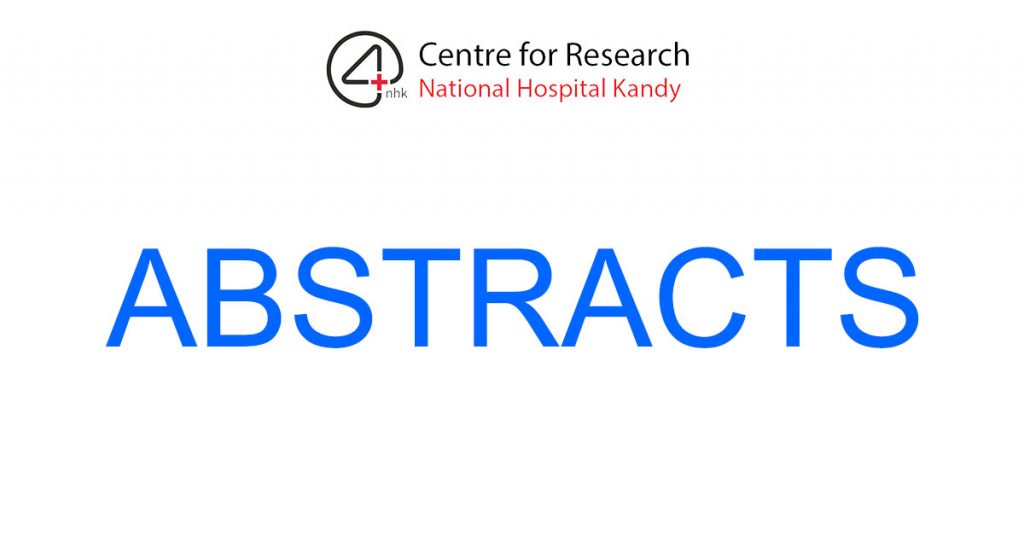Randomized control trial of prednisolone and doxycycline in patients with acute interstitial nephritis of unknown aetiology.
Zeid Badurdeen, Neelakanthi Ratnatunga, Tilak Abeysekera, Abdul. W. M. Wazil, Premil N. Rajakrishna, Jalitha P. Thinnarachchi, Dulani D. Welagedera, Nadeeka Ratnayake, Adambarage. P. D. Alwis, Hemalika Abeysundara, Ranjith Kumarasiri, Richard Taylor & Nishantha Nanayakkara
Abstract
Background
Patients presenting with acute interstitial nephritis (AIN) of unknown aetiology, probably the earliest presentation of chronic kidney disease of unknown aetiology (CKDu), have been treated with oral prednisolone and doxycycline by physicians in Sri Lanka. This trial assessed the effectiveness of prednisolone and doxycycline based on eGFR changes at 6 months in patients with AIN of unknown aetiology.
Method
A randomized clinical trial with a 2 × 2 factorial design for patients presenting with AIN of unknown aetiology (n = 59) was enacted to compare treatments with; A-prednisolone, B-doxycycline, C-both treatments together, and D-neither. The primary outcome was a recovery of patients’ presenting renal function to eGFR categories: 61–90 ml/min/1.73m2 (complete remission– CR) to 31–60 ml/min/1.73m2 (partial remission– PR) and 0–30 ml/min/1.73m2 no remission (NR) by 6 months. A secondary outcome was progression-free survival (not reaching < 30 ml/min/1.73m2 eGFR), by 6–36 months. Analysis was by intention to treat.
Results
Seventy patients compatible with a clinical diagnosis of AIN were biopsied for eligibility; 59 AIN of unknown aetiology were enrolled, A = 15, B = 15, C = 14 and D = 15 randomly allocated to each group. Baseline characteristics were similar between groups. The number of patients with CR, PR and NR, respectively, by 6 months, in group A 3:8:2, group B 2:8:3 and group C 8:5:0 was compared with group D 8:6:1. There were no significant differences found between groups A vs. D (p = 0.2), B vs. D (p = 0.1) and C vs. D (p = 0.4).
In an exploratory analysis, progression-free survival in prednisolone-treated (A + C) arms was 0/29 (100%) in comparison to 25/30 (83%) in those not so treated (B + D) arms, and the log-rank test was p = 0.02, whereas no such difference found (p = 0.60) between doxycycline-treated (B + C) arms 27/29 (93%) vs those not so treated (A + D) arms 27/30 (90%).
Conclusion
Prednisolone and doxycycline were not beneficial for the earliest presentation of CKDu at 6 months. However, there is a potential benefit of prednisolone on the long-term outcome of CKDu. An adequately powered steroid trial using patients reaching < 30 ml/min/1.73m2 eGFR by 3 years, as an outcome is warranted for AIN of unknown aetiology.
Trial registration
Sri Lanka Clinical Trial Registry SLCTR/2014/007, Registered on the 31st of March 2014.
![]()

